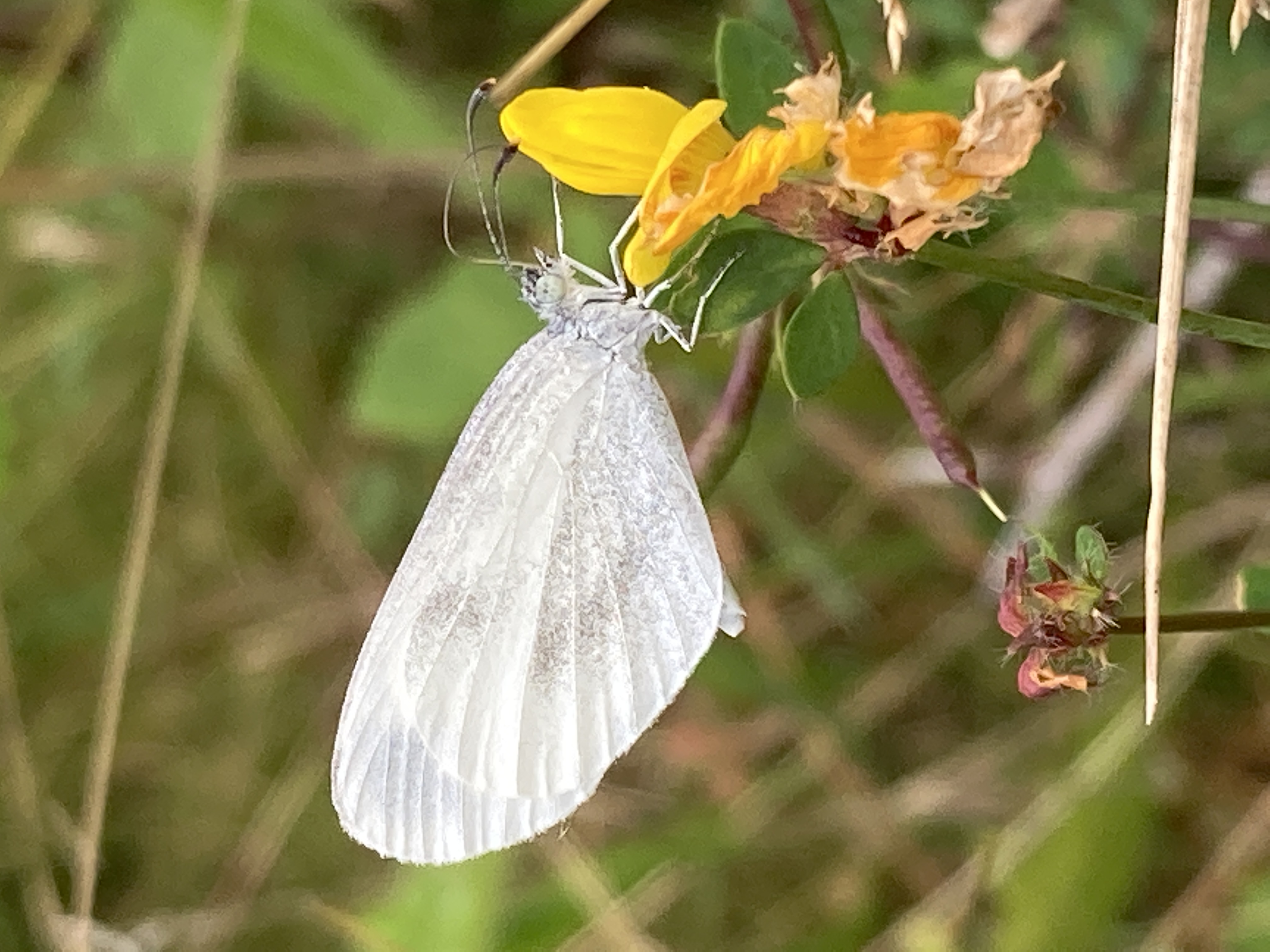Due to changes in land management the Wood White butterfly suffered a steep decline in distribution and abundance of -89% since the 1970s. There were, however, glimmers of hope for this species as Butterfly Conservation reported in 2020 that the number of occupied sites had increased since 2010 by an astounding 117% in short-term abundance between 2011 and 2020. This amazing increase was due to conservation action. Nevertheless, as a species that used to be found across southern England and spread into eastern Wales, this is now one of the UK’s most threatened butterflies and is considered ‘Endangered’ on the Red List (May 2022). The Wood White is therefore a high priority within Butterfly Conservation’s strategic aims.
Since 2019, Butterfly Conservation has embarked on a three-year project to save this species. Taking place on the border of Sussex and Surrey around a Wood White stronghold in Chiddingfold Forest, the project aims to bring together isolated colonies by creating corridors between them to increase connectivity and the area of occupied, sustainable, habitat. To tackle this, over three thousand individual plug plants, food plants of the butterfly’s larva such as Greater Bird’s Foot Trefoil, have been planted by volunteers and contractors, aiming to create three kilometres of wildflower strips.
Key stakeholders have come together to tackle this challenge, including Forestry England, National Trust, Natural England, Woodland Trust, and the South Downs National Park Authority. The collective organisations have engaged land owners of more than fifty different sites, tackling the root cause of the species decline. There is also the effort to build a more sustainable habitat with a plentiful range of wildflowers as adult butterflies need a variety of nectar plants to feed on. These habitats also then encourage the butterflies to spread to new areas and keep their population growing.
There has also been a strong engagement aspect to the project which seeks to educate local communities and groups. For example, members of the public have attended identification workshops and received training in habitat management. As a result of talks in three local villages, many landowners in the local community have also taken action by supporting habitat creation and management on their own land, thus further helping to secure the legacy of this work. Meanwhile, sessions have been delivered in schools, and children have even helped planting and seeding the wildflowers to establish habitat corridors.
As a result of these collaborations, the project has been able to bolster a primary colony, with numbers of individual Wood Whites doubling since 2015. More significantly, however, in 2021 there the presence of a new colony was confirmed three kilometres from the nearest known site. This movement demonstrates the butterflies have therefore increased in distribution – the key aim of the project.
Additionally, it also not only the Wood White butterfly that the project benefits, but also other Lepidoptera such as Grizzled Skipper, Dingy Skipper, and Drab Looper, demonstrating the interconnected nature of these projects and the wider benefit to the ecosystem.
More recently, while numbers do fluctuate, the summer of 2022 saw encouraging numbers in the second brood of the year, encouraging everyone that has participated in the project. There are also new records of Wood White in areas outside the core project boundary such as Frillinghurst Woods which demonstrates the positive impact of providing suitable habitat management outside and around the main woodland complex to link in the core butterfly population to the wider countryside.
While there is still a way to go to bring Wood Whites off the Red List and retrieve them from their ‘Endangered’ status, this project has demonstrated that conservation action can give nature the chance to recover. We are incredibly proud to say that the project is now home to 20% of Britain’s entire population of Wood Whites.
Fantastic work from our Conservation team has enabled a slowing of the decline of this dainty and beautiful species, however we still need to build the distribution of the population further to increase resilience at a landscape-scale. The Wood White Project has shown that when we work collaboratively and truly engage land managers and the public to strategically link up colonies, we can all can make astounding positive change to our otherwise threatened and dwindling species. While this project has been a success, so much more needs to be done to ensure the Wood White thrives.
Big Give Christmas Challenge 2022
We urgently need your help to continue our project to save the Wood White in Southeast England. Please consider a donation between the 29th November and the 6th December to double your impact!
Donate today
Acknowledgement:
This project has been made possible with the generous support from The National Lottery Heritage Fund, thanks to National Lottery Players and additional funding from Ernest Kleinwort Charitable Trust, Surrey & South West London Branch and the Sussex Branch of Butterfly Conservation and by private donors.


